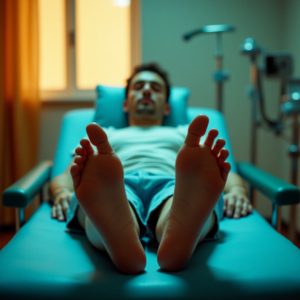Understanding the Role of Feet in Body Alignment
When it comes to rehabilitation, many might overlook the feet, yet they play an essential role in overall body alignment and function. The feet are complex structures containing 33 joints, 26 bones, and numerous muscles. This intricate architecture influences our gait patterns, balance, and even cardiovascular circulation, underscoring the need for proper foot health as a foundation for overall wellbeing.
Feet as the Foundation of Movement
Beginning rehabilitation with a focus on the feet is crucial because they serve as the base for all movement. Just as a house requires a solid foundation, our bodies need strong, well-functioning feet to maintain optimal alignment and function throughout the rest of the body. When the feet are not functioning optimally, even minor deviations can lead to compensatory patterns that negatively impact other areas, such as the knees, hips, and lower back.
The Impact of Foot Health on Gait and Balance
Foot health significantly affects gait and balance, which are critical for maintaining an active lifestyle. For example, countless professionals engage in activities such as martial arts, cycling, and strength training that require stable and efficient movement patterns. Poor foot mechanics can lead to issues such as overpronation, knock knees, or a weakened core and hips, causing injuries that sideline even the most committed athletes.
Research shows that minimal footwear can aid in restoring natural foot function. This is especially important for those who engage in high-impact sports, as the loads experienced during running or jumping alter foot dynamics significantly.
Rehabilitation: Piecing Together the Puzzle
During rehabilitation, focusing on the feet allows for a comprehensive understanding of the person’s movement patterns. By assessing and improving foot function, therapists can address underlying issues that may contribute to injuries. For instance, a person suffering from chronic knee pain may find that strengthening foot muscles and improving their alignment mitigates their symptoms.
Transitioning to Minimal Footwear
There are multiple benefits of transitioning to minimal footwear, however it’s vital to approach this transition cautiously. Sudden changes can lead to injuries if not paired with proper training. For the average lifetime shoe wearer, a structured program that gradually integrates foot health into their rehabilitation regime can be invaluable.
Enhancing Overall Body Function
Prioritizing foot health can lead to remarkable improvements across the entire body. When the feet function optimally, they enhance balance, stability, and coordination, which are essential for activities like hiking, running, or engaging in martial arts. This holistic approach not only alleviates foot-related issues but also elevates overall performance and quality of life.
The Biomechanics of Foot Function
The biomechanics of foot movement play a fundamental role in how we interact with our environment. Feet that are weak or misaligned can lead to a cascade of issues, affecting everything from spine health to organ function. Improved foot health can foster better nerve conduction and cardiovascular activity, reflecting a significant impact on overall health.
Addressing Common Foot Issues
While focusing on foot health is essential in general, it’s also crucial to recognize and address common foot issues during rehabilitation. Conditions like plantar fasciitis, bunions, and heel spurs are signs of poor foot mechanics that are likely affecting the rest of the kinetic chain. Addressing these issues can prevent them from progressing or further impacting the rest of the body’s function.
Custom Solutions for Busy Professionals
Integrating foot health into a demanding schedule can be challenging. Latitude Physiotherapy aims to deliver practical, evidence-based solutions tailored to the unique needs of busy professionals and athletes. Personalized assessments and targeted exercises can lead to optimal foot function, ensuring that every step taken is a step towards overall health.
Conclusion
Starting rehabilitation with an emphasis on foot health is not just beneficial—it’s essential. By recognizing the feet’s pivotal role in body alignment and function, we can restore foundational movement patterns that enhance overall bodily health. For those engaged in demanding physical activities, prioritizing foot health will not only alleviate existing issues but will also contribute to improved performance and longevity in your athletic endeavors.
For more information on how to effectively integrate foot health into your rehabilitation journey, contact Latitude Physiotherapy today.
Resources & Further Reading
- Kotruchin P, Imoun S, Mitsungnern T, Aountrai P, Domthaisong M, Kario K. The effects of foot reflexology on blood pressure and heart rate: A randomized clinical trial in stage-2 hypertensive patients. J Clin Hypertens (Greenwich). 2021;23(3):680-686. doi:10.1111/jch.14103
- Chan CW, et al. Foot Biomechanics During Walking and Running. Mayo Clinic Proceedings. 1994;69(5):448-461.
- Solveig A Arnadottir, Vicki S Mercer, Effects of Footwear on Measurements of Balance and Gait in Women Between the Ages of 65 and 93 Years, Physical Therapy, Volume 80, Issue 1, 1 January 2000, Pages 17–27, https://doi.org/10.1093/ptj/80.1.17


